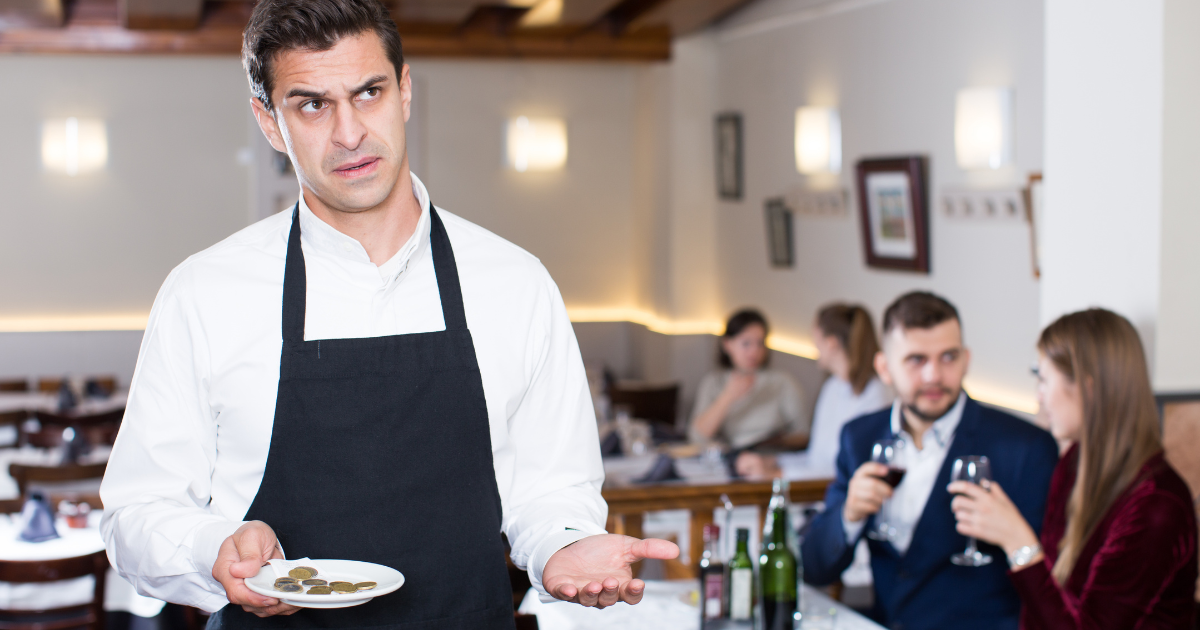
©JackF via Canva.com
Americans Don’t Know How to Tip Anymore According to New Research
November 10, 2023
The Pew Research Center claims that “Most U.S. adults say tipping is expected in more places these days, but for many the rules are unclear.”
According to a recent survey by the Pew Research Center, approximately 72% of American adults believe that they’re being asked to tip service workers more often than they were just five years ago — a phenomenon aptly named “tipflation.”
Still, as the expectation to tip spreads, the understanding of when and how much to tip remains unclear for many. Just about a third of U.S. adults find it very or extremely easy to determine both when (34%) and how much (33%) to tip for various services. Furthermore, the tipping culture in America seems to present a dilemma, with 21% viewing tipping as a choice, 29% perceiving it as an obligation, and a significant 49% declaring that it depends on the situation.
In an endeavor to unravel these complexities, the Pew Research Center conducted an extensive survey with nearly 12,000 U.S. adults, unearthing several key findings:
- Public opposition to suggested tip amounts: Businesses proposing tip amounts — on bills or checkout screens, for instance — face more opposition (40%) than favor (24%). Around 32% neither support nor oppose this practice.
- Broad disapproval of automatic service charges: A substantial majority, about 72% of adults, are against businesses incorporating automatic service charges or tips on bills, regardless of the group’s size. Only 10% support such charges.
- Variable tipping behaviors across services: American tipping behaviors are greatly influenced by the situation. While 92% of people frequenting sit-down restaurants declare they always or often leave a tip, smaller majorities tip for haircuts (78%), food deliveries (76%), drinks at bars (70%), and taxi or rideshare services (61%). Merely 25% report tipping always or often when buying coffee, and just 12% at fast-casual restaurants.
- Predominance of 15% or less tipping for restaurant meals: Almost six in 10 people (57%) say they would tip 15% or less for an average meal at a sit-down restaurant, including 2% who wouldn’t leave any tip. Only a quarter declare they’d tip 20% or more.
- Service quality as the key tipping factor: Around 77% state that the quality of the service received significantly influences their decision to tip and the amount they leave.
Whether tipping is viewed as a compulsory act or an optional gesture also seems to depend on age, as the study reveals. It appears that younger individuals commonly tip out of habit, whereas older consumers generally consider it more of a discretionary choice.
The tension surrounding tipping practices is emerging amid significant structural and technological changes to the tradition. Developments such as the rise of digital payment platforms, devices prompting tips, and mandatory service charges are reshaping the tipping landscape.
The Pew Research Center’s survey, conducted between Aug. 7-27 this year, provides a window into the ongoing debate surrounding an everyday American practice that is widely accepted yet often disputed, promising further discussions and potential shifts in this evolving landscape.
Recent News
Tesla’s Supercharger Shake-Up Leaves Uncertainty
Tesla’s recent layoffs have raised questions about the future of its Supercharger network. With close to 500 workers cut, including key figures, Tesla’s move signals a significant shift in its charging strategy. This decision comes amidst CEO Elon Musk’s ongoing efforts to streamline operations.
Formula One Gets Boost in Miami Merchandise Sales
J.P. Morgan Payments steps up to manage transactions for Formula One merchandise during the Miami Grand Prix, on-site and online.
Vodka Introduces New Spirit From Outer Space
In the realm of spirits, innovation is often the key to standing out amidst a sea of familiar flavors. Enter Shooting Star Vodka, a groundbreaking concoction that defies convention with its infusion of a truly extraterrestrial ingredient: a meteorite discovered in 1977. This celestial addition has transformed the humble vodka into a cosmic elixir, promising drinkers a taste experience unlike any other.
Survey Reveals Britain’s Favorite Breakfast Cereal
When it comes to breakfast cereals in Britain, one particular brand has managed to carve out a niche for itself: Crunchy Nut corn flakes. Despite its high sugar content, this classic cereal has been dubbed Britain’s favorite, a title it has held for almost 50 years. Originating from the Kellogg’s factory in Trafford Park, Manchester, in 1980, these corn flakes, enhanced with honey, molasses, and peanuts, exceeded initial sales projections by threefold within the first three months.

